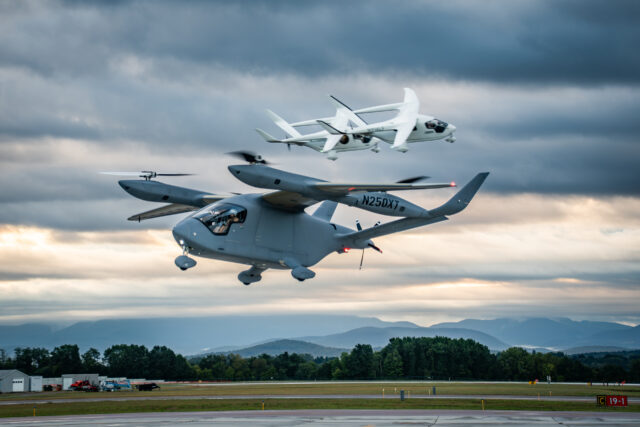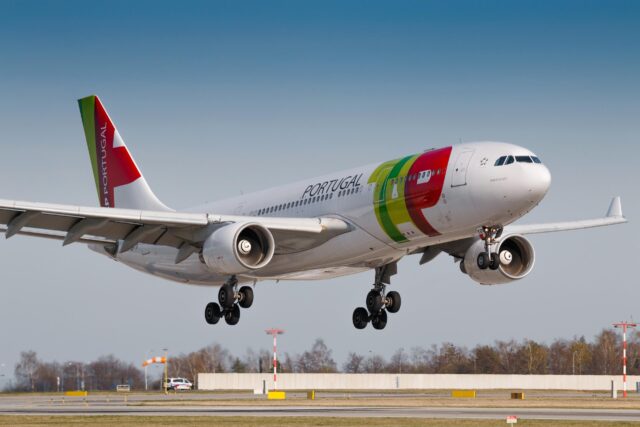China flies new Hongdu advanced jet trainer to rival the USAF’s Boeing T-7 Red Hawk

October 29, 2025

Yet another new military Chinese aircraft has made its public debut, this time an advanced trainer. The aircraft appears to be the Chinese counterpart to the USAF’s upcoming T-7 Red Hawk.
China unveils new advanced trainer jet
Not all consequential new military jets need to be next-generation stealthy fighter jets. Adding to its slew of new military jet designs, China has unveiled a new advanced trainer aircraft.
A slightly larger and clearer version of the same image. https://t.co/u8Lcn6VZ9D pic.twitter.com/FL2RfFAEz1
— @Rupprecht_A (@RupprechtDeino) October 28, 2025
The tandem two-seat trainer appears to have been developed by Hongdu Aviation Industry Group (HAIG) in China’s Nanchang region. Footage emerging online shows the new aircraft in yellow primer paint.
Like the incoming US T-7A Red Hawk, the new HAIG trainer could be optimised for China’s present and future generations of fifth- and sixth-generation fighter jets. The aircraft features a large head-up display and hardpoints on the wings. The latter suggests the aircraft could have a secondary combat role.

Hongdu is best known for producing trainers and light combat aircraft like the Hongdu JL-8 (co-developed with Pakistan) and Hongdu JL-10. The official Chinese designation for the trainer is unclear.
A possible carrier role as China dramatically grows its naval fleet
The new trainer’s robust tricycle landing gear with twin nosewheels, coupled with prominent leading-edge root extensions, led The War Zone to suggest it could be designed for carrier operations.

The aircraft could complement or replace China’s Guizhou JL-9 (FTC-2000 Mountain Eagle) trainer, developed from the Chinese licensed copy of the Soviet MiG-21 Fishbed. The JL-9G is the navalized variant for carrier operations.
There have been navalized versions of the JL-10, with at least a mockup appearing on China’s latest carrier, the Fujian.
Starting with bringing the former semi-completed Ukrainian/Soviet Kuznetsov-class carrier into service as the Liaoning, China is rapidly developing its carrier fleet. It has built the improved Shandong carrier from scratch and now has the all-new Fujian supercarrier in sea trials.
JL-9G pic.twitter.com/a4g2nhi1JR
— Alert 5 (@alert5) May 15, 2018
Next, there are reports that China plans to build its first nuclear-powered aircraft carrier. China also has five landing helicopter docks in service or sea trials.
Appears to use domestic Chinese WS-17 engines
According to The War Zone, citing “unconfirmed reports,” the aircraft is powered by two domestic Chinese WS-17 turbofans. If true, this is significant and heralds yet another step in China’s weaning itself of its historic dependence on foreign engines.

China is still in the process of establishing itself as one of the few countries able to design and produce jet engines. While its fighter jets are now produced with domestic engines instead of Russian/Soviet engines, it still doesn’t have engines for commercial aircraft like the COMAC C919.
The Hongdu JL-8 (L-15 Falcon) design was assisted by Russia’s Yakovlev, which also developed the Yak-130 Mitten advanced trainer/light combat aircraft. The Yak-130 initially shared a common design origin with the Italian Alenia Aermacchi M-346 Master.
Hongdu’s Pakistani variant of the JL-8 is powered by the US-supplied Honeywell TFE731-2A turbofan engine, while the Chinese variant comes with the Ukrainian Ivchenko-Progress AI-222K-25 afterburning engine.
🇨🇳 Detailed close-up view of China's WS-10 engine nozzle feathers on a J-16 jet.
— Clash Report (@clashreport) March 29, 2025
The WS-10 is a Chinese high-thrust turbofan engine developed for advanced fighter jets, including the J-10C, J-11B, J-15, J-16, and J-20.
Thrust: 120–140 kN, with newer models supporting… pic.twitter.com/4QXy7kDWxF
Meanwhile, the Hongdu JL-10, which entered service in 2013, is also powered by the Ivchenko-Progress AI-222K-25F engine. The JL-10 is the more advanced trainer better suited for China’s J-10, J-16, and J-20 frontline fighters. The Ukraine war has obviously made the supply of these engines problematic, and there are reports of China testing its WS-17 engine as a replacement.
Featured Image: @Rupprecht_A / X
















